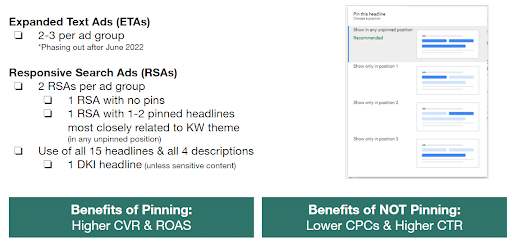The Continued Rise Of Google Ads Automation

Looking back on the last 30 years, a lot has changed — from talkboys and TI-89 calculators to having all of that and more in your pocket or on your wrist! What we can say is that Google Ads Services and automation has made our lives so much easier. As an advertiser, we’ve experienced many Google Ads automation features that have greatly cut down monitoring and guessing so we can prioritize our time on more important campaign management tactics.
Saving Time with Google Smart Bidding
In August 2010, Google announced its first automated bidding strategy — Enhanced Cost Per Click (eCPC). Prior to this, Manual CPC was the only option for optimizing keyword bids. Automated bidding has grown substantially since the addition of eCPC, allowing advertisers to maximize growth based on the business’s key performance indicators (KPIs) and goals. Google’s smart bidding strategy uses advanced machine learning to get accurate keyword bids in every auction. Below are our top three automated bid strategies that have shaped Google Ads automation:
- Target Return On Ad Spend (Target ROAS): The objective is to get the most revenue at the lowest cost. Target ROAS will maximize conversion value by adjusting your keyword bids to achieve your return on ad spend goal. Don’t know what your ROAS is? Take your Revenue (Conversion Value) and divide it by your Cost or check our recent blog on What is ROAS.
- Target Cost Per Acquisition (Target CPA): If your goal is lead generation where the focus is on increasing the total number of conversions, then Target CPA is a great bid strategy. The goal of Target CPA bidding is to get you the most conversions at the lowest cost.
- Target Impression Share: Target impression share can help you boost your ad’s visibility, and ultimately improve your brand awareness. This is a great bid strategy to keep in mind when competitors are bidding on your brand name or if your campaign goal is to increase brand awareness and recognition.
Google smart bidding strategy saves countless hours that would otherwise be spent guessing and monitoring keyword bids. No singular bid strategy reigns supreme, and each requires thorough keyword research and search query reviews.
A Brief Introduction to Automated Ad Types
Automated ad types, also known as Responsive Search Ads (RSA) and Responsive Display Ads (RDA), are the most recent additions to Google Ads automation features. These ads give some authority to Google in determining which combination of ad creatives to serve, and over time defining which set of creatives perform best. A/B split tests have never been easier! With RSAs, advertisers can select up to 15 headlines and four descriptions for Google to choose from. RDAs, on the other hand, use two standard image sizes that Google will resize to fit a variety of banner specifications and formats, allowing the ad to show in more placements than a standard display ad. With RDAs, advertisers can select up to 15 images, five logos, five headlines, one long headline, five descriptions and now five videos. Talk about versatility!
The Almighty: Rules and Scripts
Last on the list are automated rules and scripts. Rules and scripts are helpful Google Ads automations that aid in delivering data and automating tasks. Both rules and scripts can automate an account to the fullest, from pausing keywords with low-quality scores (advantageous for Google Ads for Non-Profit) to sending an email when a landing page is 404’ed.
Rules can automate optimizations and changes on an account using specific conditions that an advertiser chooses. Automated rules are highly customizable and allow for scheduled changes for almost every aspect in a Google Ads account. Here are a few ways to optimize your account by using rules:
- Increasing or decreasing keyword bids for particular times of the day
- Enabling or pausing ads for a specific promotion
- Pausing keywords if they have a quality score less than three and/or a click through rate of less than 5%
Scripts are arguably the most flexible yet sophisticated Google Ads automation feature. Google Ads scripts are written in JavaScript and are used to automate procedures, provide reports or send alerts within an account. It is like automated rules on full throttle! Similar to automated rules, scripts can also be scheduled to run on a specific frequency and be customized to any aspect. Before using scripts, be sure that you know how to work in JavaScript. Some common uses for scripts are:
- Providing reports on campaign budget pacing
- Sending an email alert when the account is down
- Analyzing keyword quality score performance
Optimize Your Strategy with Automation
The rise of Google Ads automation has paved the way for more in-depth and strategic, smart campaign optimization. Automations allow advertisers to spend more time developing technical strategies to meet company goals, while the robots hack away at the menial tasks. If you’re unsure how you can maximize your efficiencies with automation, contact us today for a proposal!
Our Editorial Standards
Reviewed for Accuracy
Every piece is fact-checked for precision.
Up-to-Date Research
We reflect the latest trends and insights.
Credible References
Backed by trusted industry sources.
Actionable & Insight-Driven
Strategic takeaways for real results.





